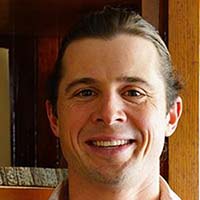Speaker: Evan Larson, Professor of Environmental Sciences and Society, UW–Platteville

Western perspectives on the idea of wilderness are evolving, making space for people to be recognized as contributors to diversity and resiliency, and not just as damaging agents, a notion that is already deeply embedded within many Indigenous knowledge systems. Bringing these perspectives together can help identify pathways to a more just and sustainable future that supports the diversity and abundance of the socioecological systems of which we are a part. An emerging network of Indigenous and non-Indigenous researchers are weaving tree-ring-based fire history information with Traditional Knowledge to tell a more complete and accurate story about the role of people and fire in shaping the forested landscapes of the Upper Great Lakes.
Lessons learned in places like the Boundary Waters Canoe Area Wilderness, a landscape that helped justify establishment of the 1964 Wilderness Act which codified the separation of people and nature, help notions of wilderness dissolve while ideas of reciprocity bring people squarely into the community of life as active participants and co-creators, rather than separate individualists. Expanding this research into additional regions consistently reinforces the idea that the fates of people and red pine are intertwined and moderated through flames, and that this relationship serves as a flagship for myriad other fire-dependent beings. The stories of fire held in the rings of trees are a vital catalyst to this effort, enabling cross-cultural conversations and collaborations among a growing network of stakeholder groups engaged in land and fire stewardship across the Great Lakes Region, with lessons for all fire-dependent systems in a dynamic and changing world.